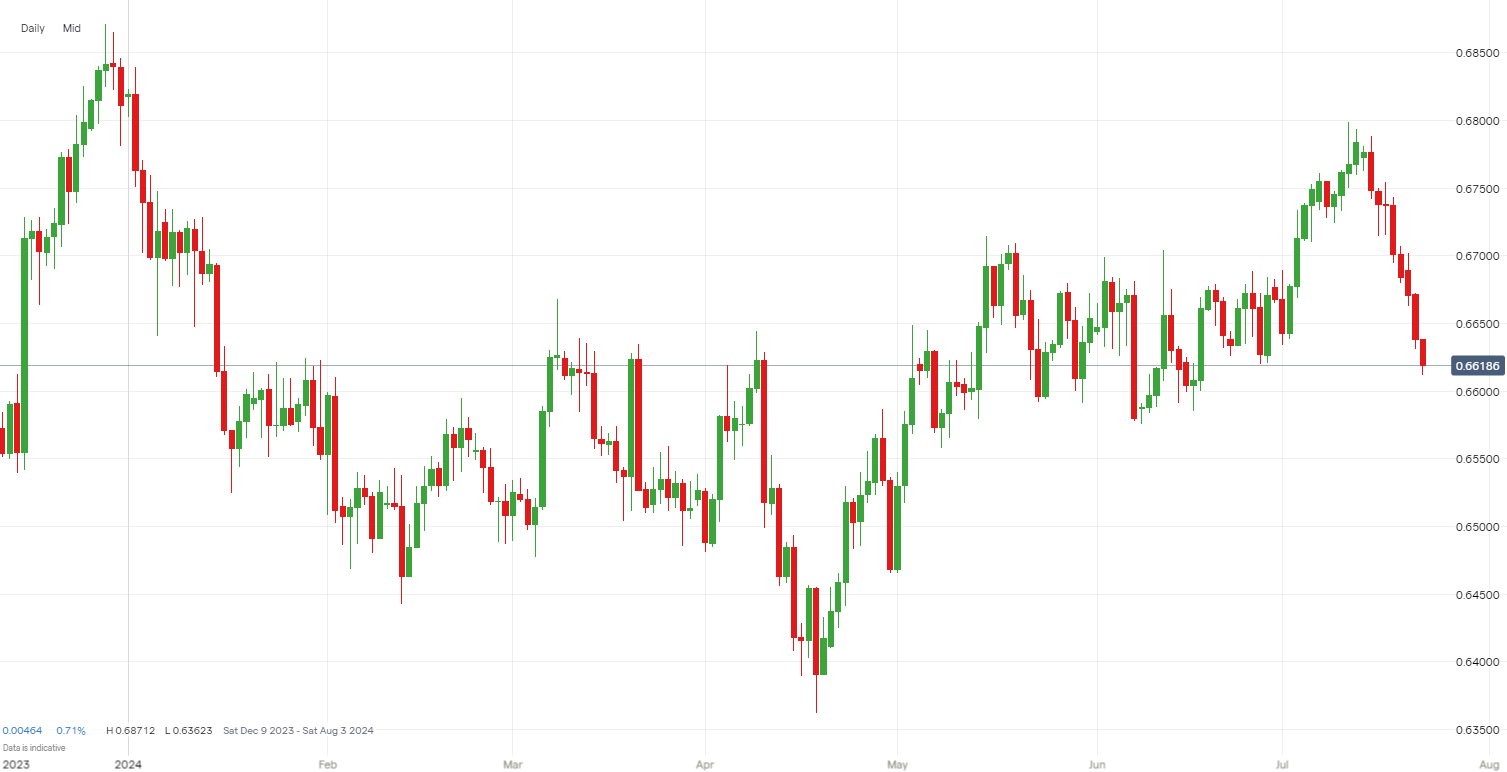AUD/USD price analysis: Australian dollar falls -2% as stocks fall from highs
Discover the factors behind the Australian dollar's recent 2% decline as it tracks a fall in US stocks. Learn how recent market trends and upcoming economic indicators could influence AUD/USD movements.

Key points
- AUD/USD has reversed from a 7-month high, dropping 150 pips in the last 8 trading days
- The Australian dollar has a +0.50 correlation to the S&P 500 (3-month)
- US stocks sold off last week after hitting new all-time highs
- 0.6300 is a lower bound for AUD/USD, historically
- Upcoming Aussie inflation could affect AUD prices
Aussie falls over 150 pips, nears 0.6600
After reaching a seven-month high on July 12th, AUD/USD has experienced eight consecutive days of decline, now trading below 0.6620, marking a stark one-month low. This sharp reversal highlights the volatility and rapid shifts that can occur in forex markets, impacting traders' positions and strategies.
AUD/USD price history

AUD/USD highly correlated to S&P 500
Throughout 2024, the Australian dollar has shown a strong positive correlation with the S&P 500, maintaining a three-month rolling correlation around +0.50. Both assets are considered 'risk-on' for US investors, often moving in tandem based on global market sentiment and economic forecasts.
S&P 500 fell 100 points in last week
After peaking at new highs mid-last week, the S&P 500 subsequently dropped 100 points, ending the week on a lower note. While there has been a slight rebound this week, levels remain below last week's highs, possibly affecting correlated markets like AUD/USD.
Could AUD/USD fall to 0.6300?
The 0.6300 mark has historically been a strong support level for the AUD/USD pair over the past two decades. Although it briefly dipped below 0.6400 in April and approached 0.6000 at the pandemic's outset, it has not consistently traded below 0.6300 since 2003, presenting a potential floor in current trading conditions.
Upcoming Aussie inflation could boost AUD
Australian inflation statistics due July 30th could potentially strengthen the AUD, particularly if the figures surpass expectations as they did last month. Positive CPI results may fuel speculation about imminent rate hikes by the Reserve Bank of Australia, influencing AUD demand.
How to trade AUD/USD
- Open an account to get started, or practice on a demo account
- Choose your forex trading platform
- Open, monitor, and close positions on AUD/USD
Trading forex requires an account with a forex provider like tastyfx. Many traders also watch major forex pairs like EUR/USD and USD/JPY for potential opportunities based on economic events such as inflation releases or interest rate decisions. Economic events can produce more volatility for forex pairs, which can mean greater potential profits and losses as risks can increase at these times.
You can help develop your forex trading strategies using resources like tastyfx’s YouTube channel. Our curated playlists can help you stay up to date on current markets and understanding key terms. Once your strategy is developed, you can follow the above steps to opening an account and getting started trading forex.
Your profit or loss is calculated according to your full position size. Leverage will magnify both your profits and losses. It’s important to manage your risks carefully as losses can exceed your deposit. Ensure you understand the risks and benefits associated with trading leveraged products before you start trading with them. Trade using money you’re comfortable losing.
